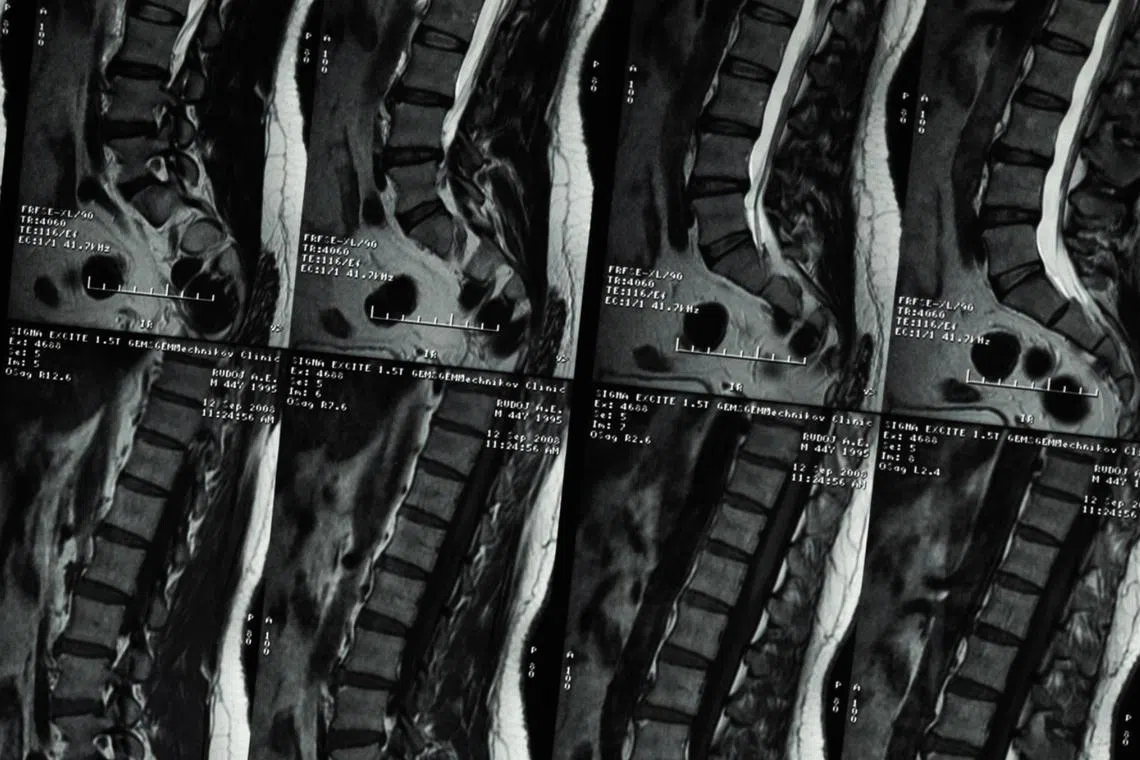askST: Is there a cure for scoliosis among teenagers?
Sign up now: Get ST's newsletters delivered to your inbox

In Singapore, a school-based scoliosis screening programme screens tweens and teenagers yearly.
PHOTO ILLUSTRATION: PEXELS
Follow topic:
SINGAPORE - Scoliosis is a sideways curvature of the spine that when viewed on an X-ray, appears like an “S” or a “C” shape than a straight line.
One of the most common forms is adolescent idiopathic scoliosis, which typically occurs in teenagers. The risk is higher and occurs earlier in girls
In Singapore, a school-based scoliosis screening programme managed by the Health Promotion Board’s School Health Service screens tweens and teenagers yearly, at the time they enter their growth spurt. That is when an abnormal growth of the spine may potentially happen. Most of the students diagnosed have mild scoliosis. The rest are referred to orthopaedic specialists.
Q: Can the curvature of the spine be reversed?
A: In most cases of adolescent idiopathic scoliosis, the curve is not reversible without surgery.
Q: How do exercises such as pilates, yoga or even ballet affect scoliosis?
A: While these have not been proven to affect scoliosis either positively or negatively, it probably does no harm to be engaged in physical activities that make use of all the trunk muscles regularly. There are several groups of exercises that are aimed at scoliosis and these have some scientific basis. The most well-known is the Schroth method, which combines breathing, strength training and posture awareness. This helps hold the body straighter and in better balance.
Q: How does wearing the Boston brace or the latest 3D brace help?
A: The brace mainly works to guide growth, and stop or slow the progression of scoliosis. It works best during the rapidly growing phase of the patient’s life.
Q: If physiotherapy helps, then how often must the patient go for physiotherapy before the curve is corrected?
A: An individual programme needs to be planned with the physiotherapist. Not all treatments need to be done with the physiotherapist. Exercises can be taught, and these should be carried out diligently by the patients on their own.

The morning papers in Sydney on September 15, 2015, show Australia's new Prime Minister Malcolm Turnbull, after he ousted sitting Prime Minister Tony Abbott in a snap party vote on September 14. Turnbull will be the country's 29th prime minister -- and the fourth in five years as Australian political parties maintain a brutal tradition of swiftly removing failing leaders. AFP PHOTO / William WEST / AFP PHOTO / WILLIAM WEST##########x##########AFP
AFP


